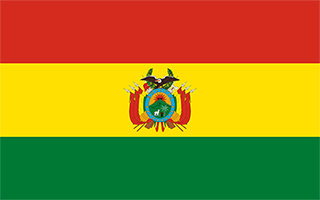Facts and Data
Webpages:
Official Unesco Page
Ancient Agriculture at Tiwanaku (Mesa Community College, Arizona)
Tiwanaku (EMuseum, Minnesota State University)
Museo Regional Arqueologico de Tiwanaku (spanish only)
Tiwanaku, a Photo Gallery
Basis Data:
Unesco World heritage since: 2000
Size of heritage:
Coordinates:
Longitude: -67,322°
Latitude: -15,442°
Summary
The city of Tiwanaku, capital of a powerful pre-Hispanic empire that dominated a large area of the southern Andes and beyond, reached its apogee between 500 and 900 AD. Its monumental remains testify to the cultural and political significance of this civilisation, which is distinct from any of the other pre-Hispanic empires of the Americas.
Location on Map
Show bigger map on Openstreetmap
Introduction
Tiwanaku, located in the Province of Ingavi, Department of La Paz, Bolivia, is a UNESCO World Heritage site that holds immense historical and cultural significance. As the spiritual and political center of the Tiwanaku culture, this ancient city showcases the remarkable achievements of an advanced civilization that thrived from 300 to 1000 AD.
History
The Tiwanaku culture emerged around 1500 BC and reached its peak between 500 and 900 AD. The city of Tiwanaku served as the capital and religious hub of this civilization, which extended its influence across the Andean region. The culture's architectural and artistic achievements were unparalleled in the pre-Columbian Americas.
The Tiwanaku people were skilled in agriculture, engineering, and urban planning. They constructed impressive stone structures, such as the Akapana Pyramid and the Kalasasaya Temple, using massive stones weighing up to 130 tons. These structures were meticulously aligned with astronomical events, reflecting the Tiwanaku's deep understanding of celestial movements.
Trade played a crucial role in the Tiwanaku culture's prosperity. They established extensive networks that reached as far as the Pacific coast and the Amazon rainforest, facilitating the exchange of goods, ideas, and cultural practices. The city's decline around 1000 AD remains a subject of debate among historians, with theories ranging from environmental changes to internal conflicts.
Current State
Today, Tiwanaku stands as a testament to the ingenuity and cultural richness of the Tiwanaku civilization. The site covers approximately 6 square kilometers and includes several well-preserved structures, attracting visitors from around the world.
The Akapana Pyramid, once a towering structure, now stands partially reconstructed. Its terraced levels and intricate stone carvings provide insight into the architectural prowess of the Tiwanaku people. The Kalasasaya Temple, a ceremonial complex, features the famous Gateway of the Sun, a monolithic stone sculpture adorned with intricate iconography.
Excavations and ongoing research continue to uncover new insights into the Tiwanaku culture. Archaeologists have discovered elaborate burials, intricate pottery, and evidence of complex agricultural systems. These findings contribute to our understanding of the Tiwanaku's social structure, religious beliefs, and technological advancements.
Preservation efforts are crucial to safeguarding Tiwanaku's heritage. The Bolivian government, in collaboration with UNESCO, has implemented measures to protect and conserve the site. These include the establishment of visitor guidelines, ongoing maintenance, and the training of local communities in heritage preservation.
Conclusion
Tiwanaku, the spiritual and political center of the Tiwanaku culture, is a UNESCO World Heritage site that showcases the remarkable achievements of an ancient civilization. Its architectural marvels, advanced urban planning, and cultural influence make it a site of global significance. Through ongoing research and preservation efforts, Tiwanaku continues to captivate visitors and provide valuable insights into the history and legacy of the Tiwanaku people.
